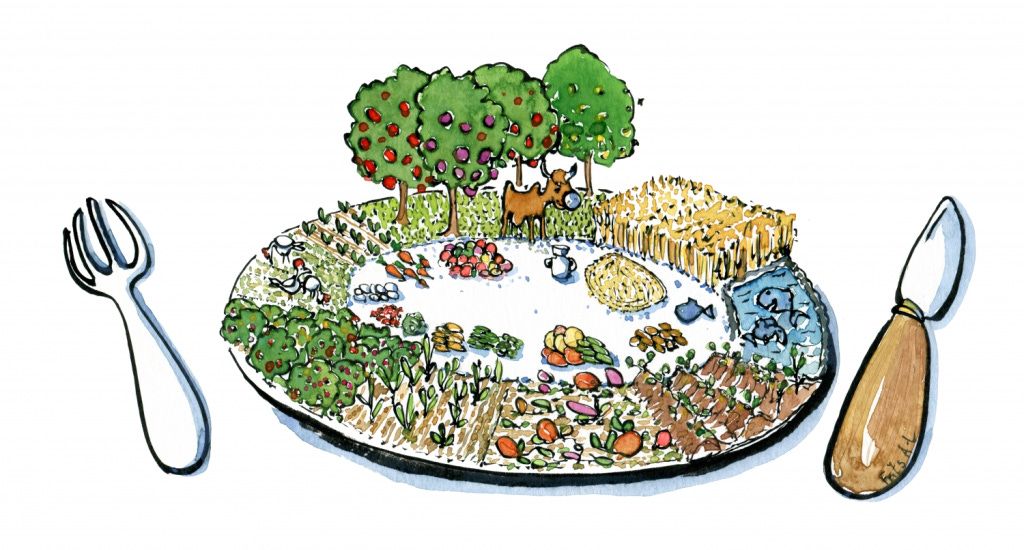Eating Local: A Silver Bullet or a Climate Distraction?
In talking to producers and consumers, building local and regional food systems seems like a clear win-win. The narrative is established: producers can capture margins lost by selling to intermediaries, while consumers can learn from the farmers and ranchers they buy from and get fresh, climate-friendly, nutritious food. Though this narrative carries much truth to it, the purported benefits and potential pitfalls of local food systems merit a critical eye as it captures a growing share of consumers’ attention and food production. Overall, the NASS estimated that almost $12B of local edible farm products were produced in 2017 - roughly 3% of all agricultural sales and a 35% increase in 2015. A 2018 Gallup poll shows that almost 75% of Americans are trying to include local foods in their diets. This has only surged after COVID, where many consumers turned to local ranchers and farmers for high-quality products as other supply chains broke down. Be it through farmers’ markets, restaurants, local institutions, and retailers, the local food segment is set to take off, so we should endeavor to understand what this entails for the food system.
Overall, the greatest value of buying local is that it gives visibility and transparency into exactly how the food is grown and who is growing it. We should think about the benefits of eating locally in the following categories:
Connecting consumers to producers: Many forms of local food purchases allow consumers to directly interact and learn from where their food comes from. Even with grocers, consumers feel that “backyard supply” is an important consideration. As a USDA AMS paper states, “the local food market is what sociologists call a moralized market, where people combine economic activities with their social values. It’s not just about the economical exchange; it’s a relational and ideological exchange as well. It’s about valuing the relationship with the farmers and people who produce the food and believing that how they produce the food aligns with your personal values.”
Stimulating resilient local economies: Buying local food creates a better value proposition for farmers and ranchers while also ensuring the availability of high-quality food for consumers. In traditional food outlets, farmers and ranchers receive 15 cents of every food dollar, while in local contexts like a farmers market, farmers and ranchers can receive a majority of that share - and the money remains in local circulation. This is why consumers are willing to pay a premium for goods from small-scale local farmers instead of distant brands that profit from economies of global scale that oftentimes profit from externalizing costs to the environment, our health, and much more. Additionally, during the COVID-19 crisis, local and regional food systems adapted much more effectively to changing conditions - which has led to more consumers investing in these relationships.
Nutrition effects: the Rodale Institute argues that local food is better for you for a variety of reasons, notably nutrient variety in local in-season produce, a correlation with more eco-friendly growing practices, and the fact that “most non-local produce is picked before it is fully ripe so it can survive the trip to the grocery store. This may be great for business, but when a plant is allowed to linger on the vine and fully ripen before being harvested, its nutrient content is higher.” Additionally, Rodale cites a study that found that “the vitamin C content of broccoli was cut in half when it was shipped from out of the country compared to when it was sourced locally”
However, the key underlying hole in this narrative is that locally grown foods do not equal more climate-friendly foods, all else being equal. This is because “food miles” do not represent a substantial change in life cycle greenhouse gas accounting when compared to on-farm accounting and what is being produced. In the end, from a climate impact perspective, the how matters more than the where. If locally grown food is regenerative (and indeed locally grown products are more likely to be grown without pesticides and using a variety of more regenerative techniques), it works out. This is not necessarily the case. Thinking in a local-only paradigm can lead to more indoor farming, which can be less sustainable and more energy-intensive, or meat raised with questionable labels and certifications.
Overall, the local food movement is only growing, so we should take advantage of its transparency and build a local food infrastructure that promotes regenerative practices and equitable distribution. I’m quite curious about what the rise of carbon labeling will mean for local farmers and ranchers, especially those who don’t have the cash and scale now to afford new certifications or to get involved with USDA programs. The growth of food hubs, and funding for them on platforms like Steward, across the nation, presents an opportunity to integrate regenerative into the appropriate local contexts. Placing an emphasis on purchasing local, regenerative goods at grocery stores and other larger outlets allows consumers-on-the-margins to push forward the local food movement to a new scale while ensuring goods are produced regeneratively.
Disclaimer: The Regeneration Weekly receives no compensation or kickbacks for brand features - we are simply showcasing great new regenerative products.
If you have any products you would like to see featured, please respond to this newsletter or send an email to Kevin(at)soilworksnaturalcapital.com
The Regeneration is brought to you by Wholesome Meats | Soilworks | Grassroots Carbon| Grazing Lands






Thanks for the Steward shout-out Kevin. Folks can check out our short-term lending option: Steward Regenerative Capital with monthly loan repayments at a fixed interest rate. Terms at stwd.farm/src